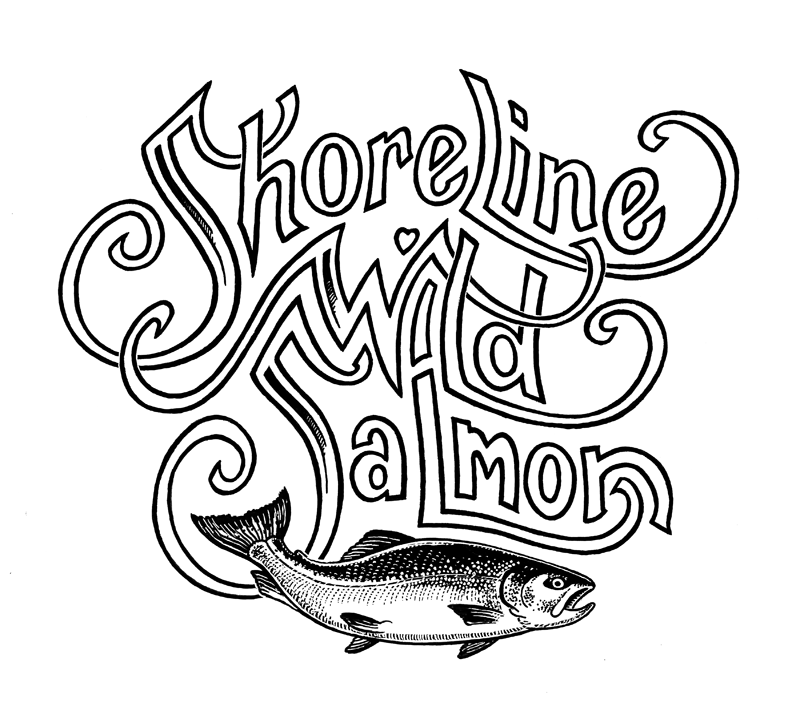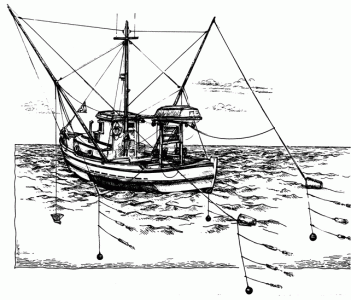Fishing Method: Trolling (Hook and Line)
Check out Captain Joe and I featured in the Alaska Seafood Marketing Institute’s Trolling Quality Handling Guide.
Environmentally Responsible and Quality Driven
Trolling is a unique fishery in Southeast Alaska that selectively targets salmon with hook and line, making it environmentally responsible. In the event we catch a fish we are not targeting (also known as by-catch), trollers are able to quickly release them back to sea without harm.
Trollers are known for the high-quality salmon they produce. Why is that? It’s because trolling is a tedious process of catching each fish one at a time, immediately pressure bleeding and cleaning them, and then placing them on ice. The diagram below illustrates the basic setup of a trolling vessel. The set up is similar aboard the vessels that fish for Shoreline Wild Salmon. Fishing lines with lures or bait fish are drawn through the water behind a moving boat, or by slowly winding in the line from a single position. These lines are attached to a bell, which alerts the crew when a salmon is on the line.
This image illustrates the basic setup of a trolling vessel. Image from the Alaska Trollers Association.
Trolling is truly a quality-driven fishery; the volume of troll-caught fish is much smaller than that for net-caught fisheries. In fact, according to the Alaska Seafood Marketing Institute, “troll-caught salmon generally make up less than 10 percent of the total Alaska catch of all species of salmon”.
A Fishery of Small Boat Fishermen & Ocean-Caught Salmon
You might think of shows like the Deadliest Catch when you think about Alaska seafood, but that isn’t quite what it looks like in the troll fishery. Trollers are relatively small fishing vessels that are operated by one or two people. Trollers fish on the coast of Southeast Alaska, which is why we often refer to our salmon as “ocean caught” or “brights”. That is, the salmon are fished at their peak, before they begin to move inshore to spawn, which results in the freshest tasting salmon possible.
The way we catch and handle salmon matters. Thanks for trusting us to provide the most sustainable, highest quality wild Alaska Salmon possible.
Do you have more questions about our process? Don’t hesitate to send us a message. We’d love to chat.

